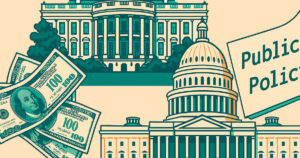This summer, as nearly 33,000 veterans sleep on the streets and millions of working families drown under the weight of rising costs, President Donald Trump wants taxpayers to fund a military parade for his birthday.
Yes, really.
According to multiple reports, including The New York Post and The Times, the White House is planning a massive military parade in Washington on June 14, 2025, a date that just happens to mark both the 250th anniversary of the U.S. Army and President Trump’s 79th birthday.
The proposed display would stretch four miles from the Pentagon to the White House and include tanks, missiles, military personnel, and fighter jet flyovers. Supporters say the event is designed to honor the armed forces. Still, the scale, timing, and financial implications have left many Americans with questions about cost, message, and motive.
At a time when we’re told the budget can’t cover basic needs like housing, healthcare, or political reform, this parade has struck some as an unusual fiscal and symbolic choice.
Can You Cut Waste by Spending More?
President Trump has long portrayed himself as a budget-conscious leader. A champion of efficiency and cost-cutting. But major spectacles like this one, especially those that draw attention for their pageantry, inevitably invite scrutiny over whether those principles are being consistently applied.
When a similar parade was proposed in 2018, the Pentagon ultimately shelved the idea due to projected costs exceeding $90 million. No, that’s not a typo. Ninety. Million.
That sum, while symbolic in the scale of federal budgeting, could alternatively fund permanent housing for thousands of unhoused veterans, addiction recovery programs, or upgrades to outdated infrastructure. It might also be used to protect democratic institutions through election security or campaign finance oversight.
And then there are the indirect costs: repairing damage to roads from heavy equipment, managing the added strain on security and emergency services, and the disruption to life in the nation’s capital. Mayor Muriel Bowser has already confirmed that coordination discussions with the administration have begun.
For many, this all raises a difficult question: are public resources being used for public benefit, or for political symbolism and ego?
The Message Matters
Military parades send powerful messages. In some countries, they’re used as a tool of autocrats to project dominance. North Korea. Russia. China. These are regimes that use military displays not to celebrate freedom, but to suppress it. In others, to honor service and sacrifice. But here in the U.S., they’re relatively rare, and that’s by design.
Ours is a nation built on civilian leadership and democratic accountability, not military displays tied to individuals or political milestones. That’s why many Americans across ideologies feel uneasy about the idea of tanks rolling down Pennsylvania Avenue so close to a party convention or a presidential birthday. Even if the stated purpose is patriotic, the optics are complicated.
The White House has not released a detailed budget for the event, nor confirmed who will foot the bill. But unless privately funded, the costs are likely to fall to taxpayers—the same taxpayers frequently told that belt-tightening is the only responsible path forward.
A Broader Reflection on Priorities
This parade may be one event, but it’s also a symbol of deeper questions about who our government serves and how decisions are made. Are we a nation of fiscal responsibility or fiscal hypocrisy?
At the Money Out of Politics (MOP) Movement, a veteran-led, non-partisan coalition, we focus on rooting out systemic financial corruption in government. Our concern isn’t with a single politician or party, but with a broader culture where political access too often goes to the highest bidder, and public trust erodes as money flows unchecked through our institutions.
Consider this: for every $1 spent on lobbying, corporations receive an average of $760 in federal benefits. Meanwhile, ordinary Americans are asked to do more with less.
We don’t need a parade. We need a political reckoning.
We don’t need jets. We need justice.
And we don’t need to watch a president turn the streets of Washington into a red-carpet runway of raw power.
We need leaders who serve the people, not those who expect the people to serve them.
We don’t take a position on every headline. But we do believe moments like these should spark reflection about what kind of leadership we want and what kind of democracy we deserve.
Marching for Integrity, Not Spectacle
That’s why we’re marching.
On July 27, 2025, just over a month after President Trump’s planned parade, millions of Americans will descend on Washington and across the country for the March for Integrity, a veteran-led, non-partisan, peaceful mass mobilization calling for four foundational reforms to restore integrity in American government:
- A ban on lobbyist gifts to elected officials
- An end to Congressional stock trading
- The return of campaign finance regulations to the states’ discretion
- A Constitutional amendment to permanently keep money out of politics
These aren’t radical demands. They’re supported by the majority of Americans across the political spectrum. Because whether you lean left, right, or prefer not to pick a side at all, the principle is the same: our government should be accountable to the people, not to wealthy donors, special interests, or political insiders.
So if you’re tired of being asked to sacrifice while spectacles are spared no expense, we invite you to join us.
If you believe patriotism should look like service, not showmanship, we’ll see you in the streets—without the tanks, without the jets, and without the ego.
Just the people. Together. Demanding integrity.


